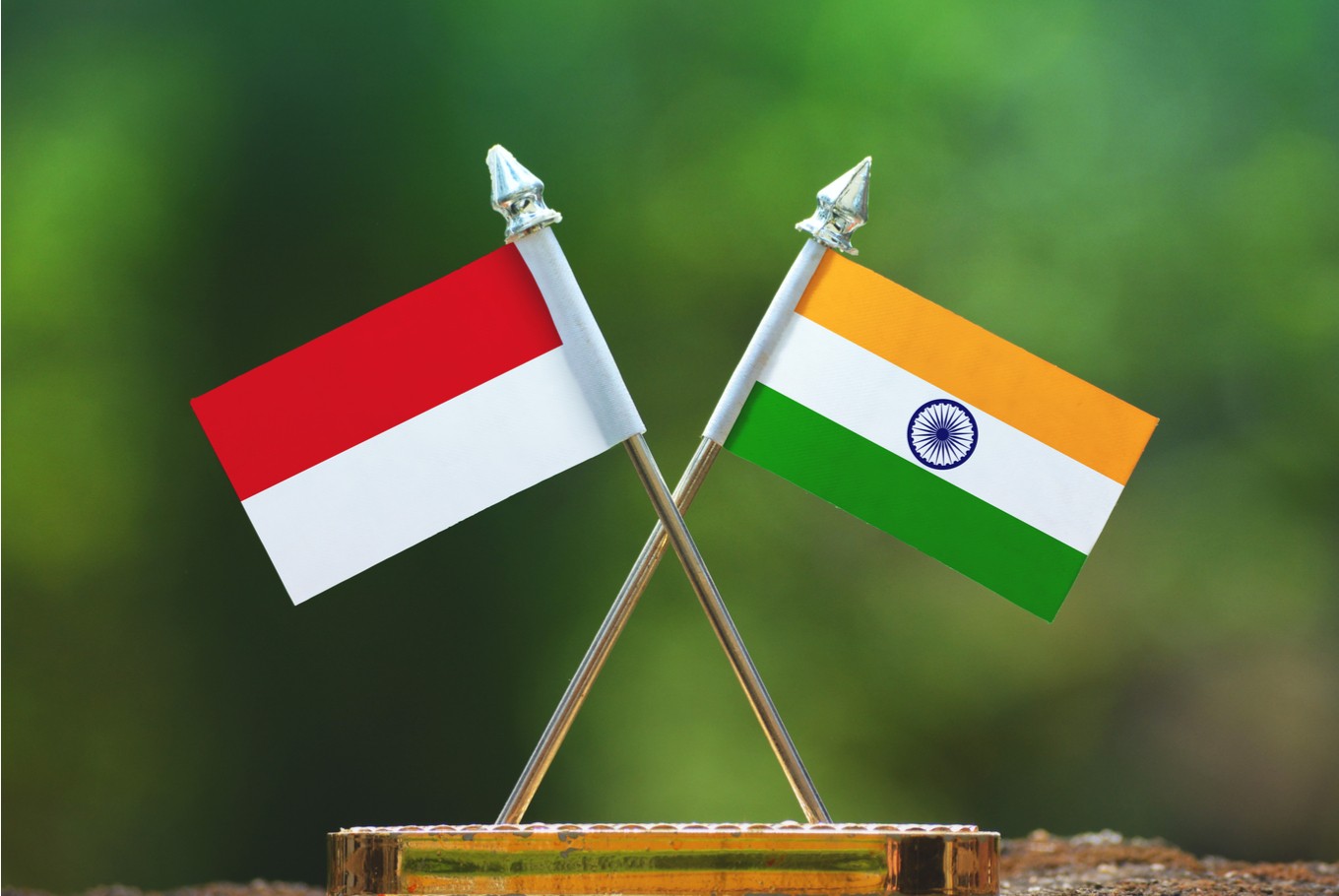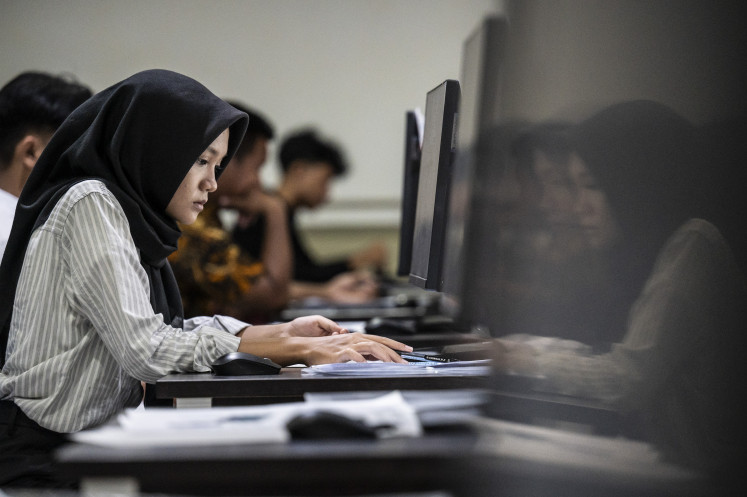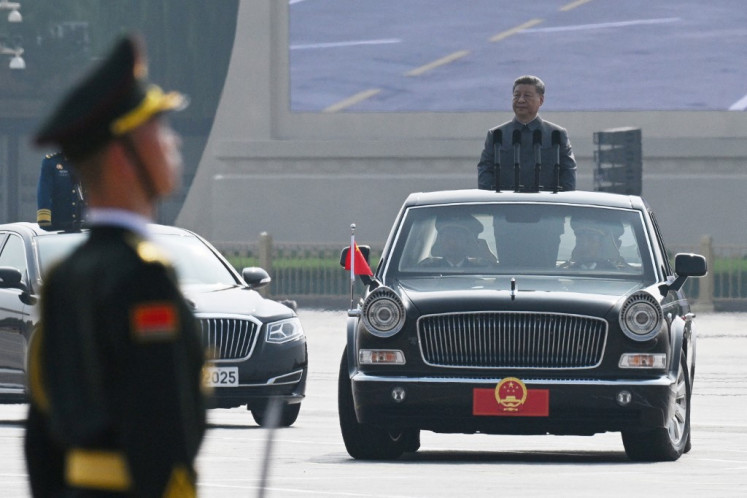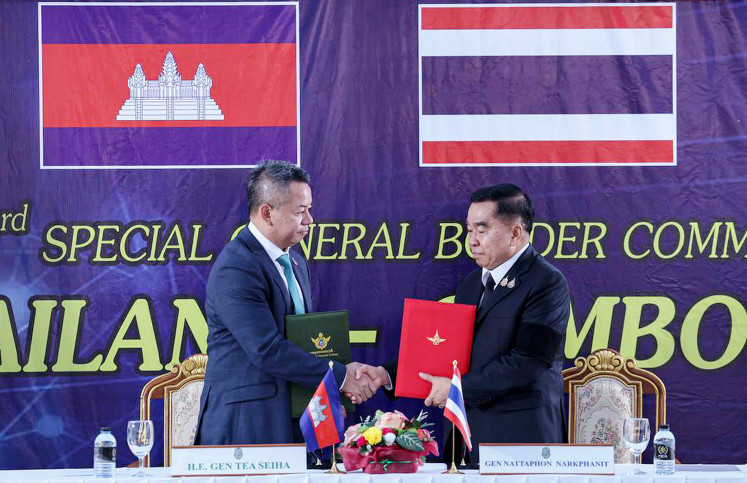Popular Reads
Top Results
Can't find what you're looking for?
View all search resultsPopular Reads
Top Results
Can't find what you're looking for?
View all search resultsIndia, Indonesia: Two sides of the same coin?
Change text size
Gift Premium Articles
to Anyone
T
he flight from Chennai in southern India to Surabaya, Indonesia, might as well have been a domestic route. The similarities between the two cities are many: from their seemingly-lawless motorcyclists to the abundant street-side vendors selling better food than most five-star restaurants.
They share a history that has pushed the two giants, India and Indonesia, far past their colonial histories to a period of multicultural state building, an economic plenitude for their new middle-classes and a perhaps deeply troubling political present.
What sealed the deal for me when I visited Indonesia recently was that politics was on the tip of everybody’s tongue.
The youth relishing satay in Surabaya’s Lapangan Kodam or the mothers swatting flies in Solo’s bustling Pasar Gade is a familiar scene.
It could have been a sweet stall in Allahabad’s old market where vendors are discussing Prime Minister Modi’s latest diatribe against the Muslim minority. There was something quite familiar about people in a warung (foodstall) pontificating about Indonesian vice-presidential candidate Sandiaga Uno’s call for halal tourism in Bali.
The setting is interchangeable given the election fever gripping both countries.
Both Indians and Indonesians tap away at on their smartphones, forwarding via WhatsApp something contentious President Joko “Jokowi” Widodo’s running mate Ma’ruf Amin said or retweeting the latest meme of challenger Prabowo Subianto, all in the middle of important conversations!
The world’s largest and third-largest democracies are weeks away from arguably their most momentous electoral decisions yet. Both countries are navigating the future of secularism, religious moderation and corruption. These elections will show what democracy truly means across the developing world.
As India begins polling on April 11 and Indonesia on April 17, there are a few similarities to be highlighted.
In both countries, inflation and unemployment are rife.
The other obvious similarity [...] is the rise of religious fundamentalism.
In Indonesia, inflation has hurt the middle-class though the poor have been kept partially afloat by a well-structured subsidy system and monetary injections into rural areas through the Village Fund program.
Through the fund, some US$4.26 billion was diverted to 74,957 villages across the country. The government has successfully created new economic centers in rural areas, reducing poverty from 14.17 percent ( 2014 ) to 13.12 percent ( 2018 ).
In India, on the other hand, mild urban inflation coupled with agricultural deflation has brought down prices of produce, leading to distress sales, systemic poverty and mass farmer suicides in rural areas.
In contrast, many of the villages I visited near Jember in East Java showed signs of closing the gap with faraway cities such as Surabaya and Yogyakarta.
But the rural and/or urban divide in India has gotten worse over the past five years. In the past two decades, more than 300,000 farmers have committed suicide. Let that sink in.
Only in February, in a feeble attempt to appease protesting farmers, the Indian government promised them 6,000 rupee (US$87) a year in handouts.
Economics matters in both countries. It allows for some space and nuance.
Jokowi’s supporters argue that the United States-China trade war has affected the government’s performance and their economic situation. The opposition Prabowo-Sandiaga campaign debate the utility of the government’s massive infrastructure drive and the large national debt it has allegedly generated.
In India, the government cannot pass the buck of economic mismanagement — much of the distress has been caused through government policy. This is visible in Modi’s demonetization program.
First, there was the overnight banning of all 500 rupee and 1000 rupee notes which took 86 percent of all currency out of circulation. Then, there was the implementation of a goods and services tax which varies from 0 to 28 percent. The downturn means that the core base of Modi’s supporters falter in arguments on the economic merits for the incumbent.
The other obvious similarity between the two is the rise of religious fundamentalism. While the world has witnessed a sudden shift to right-wing populist and religious politics — in India and Indonesia these positions are strikingly different from their past as nationalist, secular and diverse states.
The Indonesia that Sukarno built and Soeharto governed was arguably one where religion was the bedrock of society but not of the state. That has changed now with a visible societal shift towards more conservative Islam — this is reflected in both presidential campaigns attempts to woo religious voters.
According to Indonesia’s Centre for Strategic and International Studies, 47.4 percent of Muslim voters will vote for Jokowi whilse36.3 percent would vote for opposition Prabowo-Sandiaga — it is evident that this is the block to sway.
India entered its phase of ardent religious politics in the 1990s with the destruction of the Babri Masjid by Hindu fundamentalist forces. But it was not until 2014 and the rise of Modi that this form of virulent Hindu fascism saw fundamental changes to the structure of the state, from removing laws that aid Muslims and lower caste groups to encouraging mob violence against Muslims.
From 2010 to 2017, there have been 144 cases of Muslim lynched. This form of categorical violence is slowly becoming commonplace in developing democracies.
Indonesia’s saving grace is that it has a strong and moderate religious alternative — religious groups the Nadhlatul Ulama and Muhammadiyah. India’s Hindus lack this.
Both countries will decide on what democracy, faith and pluralism mean to them. The 2019 of Indonesia could be the 1990s of India: where one bad decision could set it on a highly unpredictable path.
***
The writer is a KRA Group researcher.










